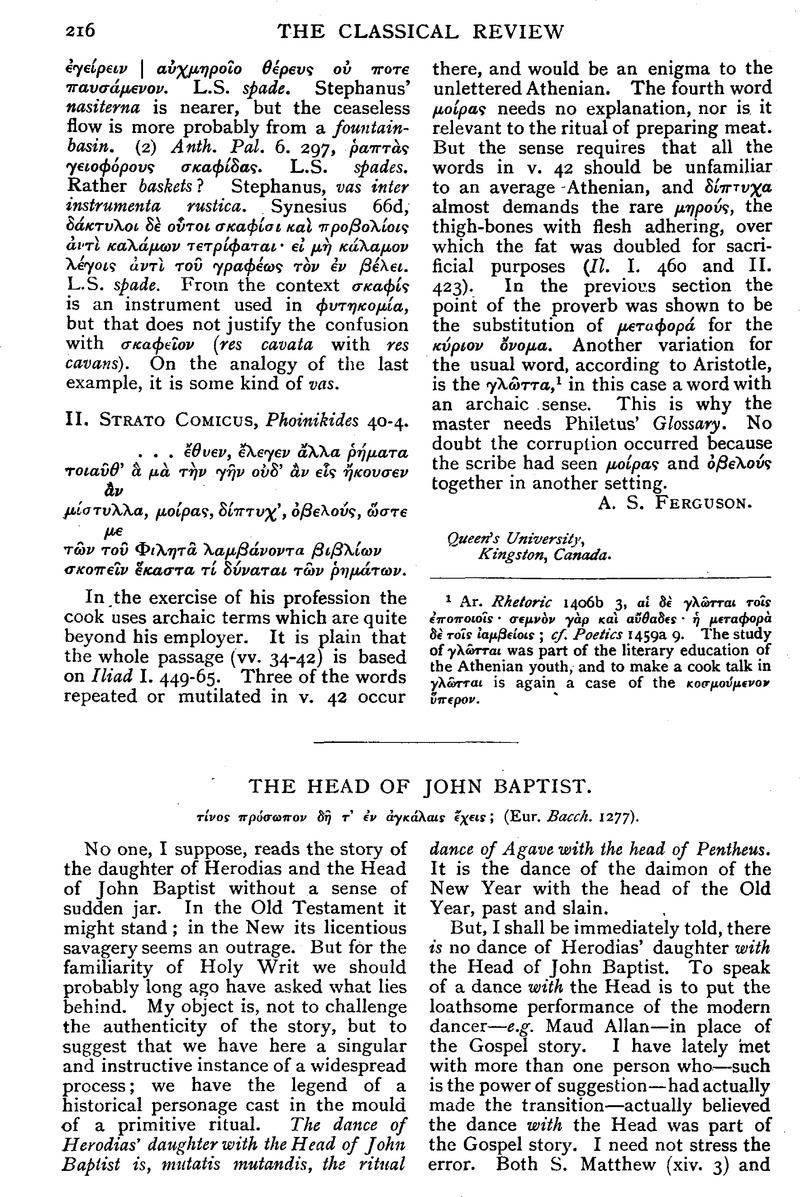Published online by Cambridge University Press: 27 October 2009

page 217 note 1 I owe my knowledge of this MS. to the kindness of Professor Bury, who lent me Vassiliev's Anecdota Graeco-Byzantina (Moscow, 1893), in which the MS. is edited.
page 217 note 2 Cf. Matt. xiv. 2. Herod thinks Jesus is John risen from the dead.
page 217 note 3 P. 50.
page 217 note 4 See my Prolegomena, p. 464. Mr. F. M. Cornford draws my attention to the interesting parallel of the severed head in the Miracle Play of Hasan and Husain (Sir L. Pelly, London, 1878).
page 217 note 5 See Professor Murray in Excursus to my Themis, 1912, p. 34c ff. ; and F. M. Cornford, Origin of Attic Comedy, 1914, P· 59.
page 218 note 1 See W. R. S. Ralston, Songs of the Russian People, for the rites of Kupálnitsa, of June 23, the Eve of John Baptist's Day, under his surname Iván Kupálo.
page 217 note 2 N. Vinogradov, Bielorueky Vertep, Izviecty Akademiŭ Nauk XIII. (1908). by the kindness of Mr. P. Mikhailov a tirage á part of this publication is in my hands. The whole question of these Vertep plays is of great interest in connection with the Year-Daimon, and I hope to return to it in a later connection. The Vertep plays have received too little attention in England. The derivation of the word Vertep is, I am informed on the best authority, unknown, and its precise form uncertain.
page 218 note 3 For Yarflo as the Slavonic form of the Greek ‘Charila’ see the invaluable paper of Mr. George Calderon, ‘Slavonic Elements in Greek Religion,1Class. Rev., 1913, vol. xxvii., p. 80.
page 218 note 4 From his commentary on the ‘Yarfla’ Songs in the Rysskia Narodnaya Lirika of Glazunov, p. 98, M. Ephemenko only mentions the head in passing, and it is not clear whether he is referring to a pictured representation or some dummy, ritual figure.